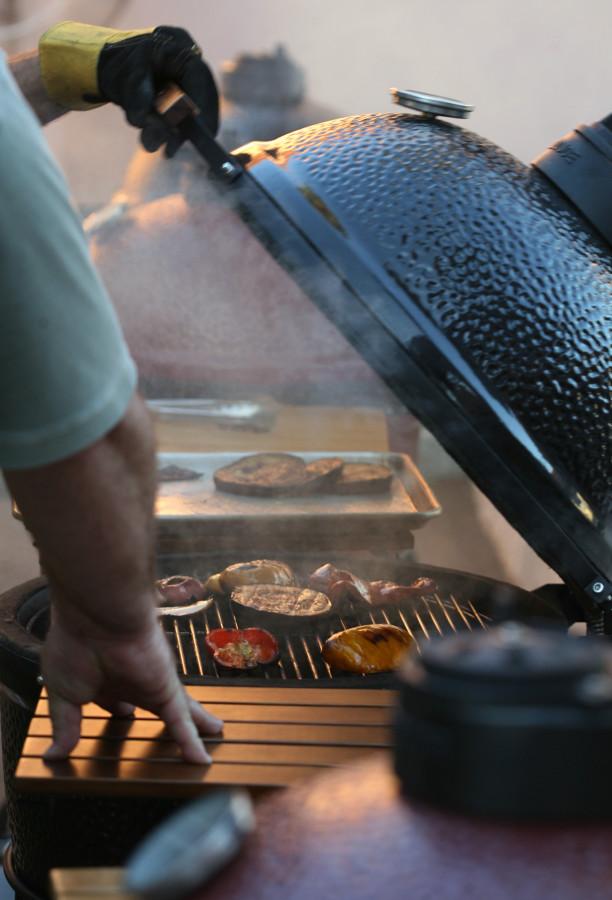Schools out for the summer! This means beach parties, barbeques, camping trips, fireworks and lots of sun.
What most people don’t think of is the risks that come with the summer. Skin cancer, food poisoning, injury from fireworks and blue algae in the water are just a few of those risks.
Skin cancer is an abnormal growth of skin cells that often develops on skin exposed to the sun.
According to Schneck Cancer Center “more than one million new cases of skin cancer will be diagnosed in the United States this year. In fact, 40 to 50 percent of Americans living to the age of 65 will develop skin cancer at least once in their lifetimes.”
There are many factors that play a part in getting skin cancer. Those with fair skin, light colored hair or eyes, and freckles generally sunburn easier and therefore are at more of a risk for skin cancer. Fair skinned people have less melanin, or pigment, in their skin and have less protection from UV radiation.
People with a history of blistering sunburns when they were younger, excessive or abnormal moles, or those with excessive exposure to the sun also have greater risk of developing it. Other factors include family history of skin cancer, personal history, weakened immune system, and age.
It is advised to seek shade during midday hours, wear clothing to protect skin and wear hats with wide brims to shade face, ears and neck. Also one should wear sunglasses that block close to 100% UVA and UVB rays and always use sunscreen with SPF 15 or higher. Reapply sunscreen if you have been outside for two hours, swam, or done something to make you sweat.
Indoor tanning beds have also been linked with skin cancer and cancers of the eye.
According to the Mayo Clinic, about 325,000 people in the USA are hospitalized every year because of food poisoning.
All restaurants are governed by State and Federal regulations when it comes to food handling methods. Many cases of food poisoning occur at home or at picnics and barbeques during the summer.
Always observe the “two-hour” rule, never eat food that needs refrigeration, if it has been out for longer than two hours. In hot weather, such as at an outdoor picnic, the rule drops to just one hour. The warm weather provides the perfect place for bacteria, such as E. coli or salmonella to grow. So if you are at a beach party or picnic, no matter how good the potato salad looks, if it has been sitting out for more than an hour don’t eat it!
Food should be stored in proper containers, preferably small containers so they cool faster, in the refrigerator. Do not keep them for more than three to five days.
According to Preventive Blindness America there are nearly 13,000 fireworks victims every year.
Fireworks are unpredictable and injuries can occur even if the person is cautious. Most fireworks contain gunpowder which is what causes them to explode. No one is safe when it comes to fireworks, many injured are bystanders.
Sparklers are thought to be one of the best and kid friendly fireworks. Often times preschool-aged children are seen running around the lawn waving them in the air.
Sparklers are the second highest cause of firework injuries that require hospitalization. They burn at 1,800 degrees Fahrenheit, a temperature hot enough to melt gold.
The simplest way to avoid injury due to fireworks is to not use them at all. If one chooses to use fireworks however, be sure to take proper precautions and remain a safe distance away from all active fireworks.
2010 and 2011 Willow Creek Lake in Pierce County, Neb. was found to have toxic blue-green algae and a Health Alert was issued.
A Health Alert means that the state believes the level of toxins in the water are potentially harmful to those participating in full-body activities such as swimming. All beaches were closed and people were advised to avoid boating and exposure to the water.
Toxic blue-green algae refers to strains of cyanobacteria that produce toxins. The strains of algae generally appear near the shoreline and have a greenish color, looking like thick paint or oil in the water.
Some pets and animals have died from drinking water containing the algae. Children and young toddlers are more at risk because they often play near the shoreline and are easily knocked over by the waves causing them to accidentally swallow water.
Symptoms include: skin rashes, lesions, blisters, ulcers of mouth, nose, eye or ear, headaches, nausea, muscular pains, diarrhea and vomiting. In rare cases have included seizures, liver failures or death.
Blue-green algae has been found in lakes around Nebraska since 2004. Be aware of visible algae in recreational waters and watch for health notices from the state.
Have a great time this summer, but be sure to follow these guidelines and be safe on your adventures, wherever they may take you.




